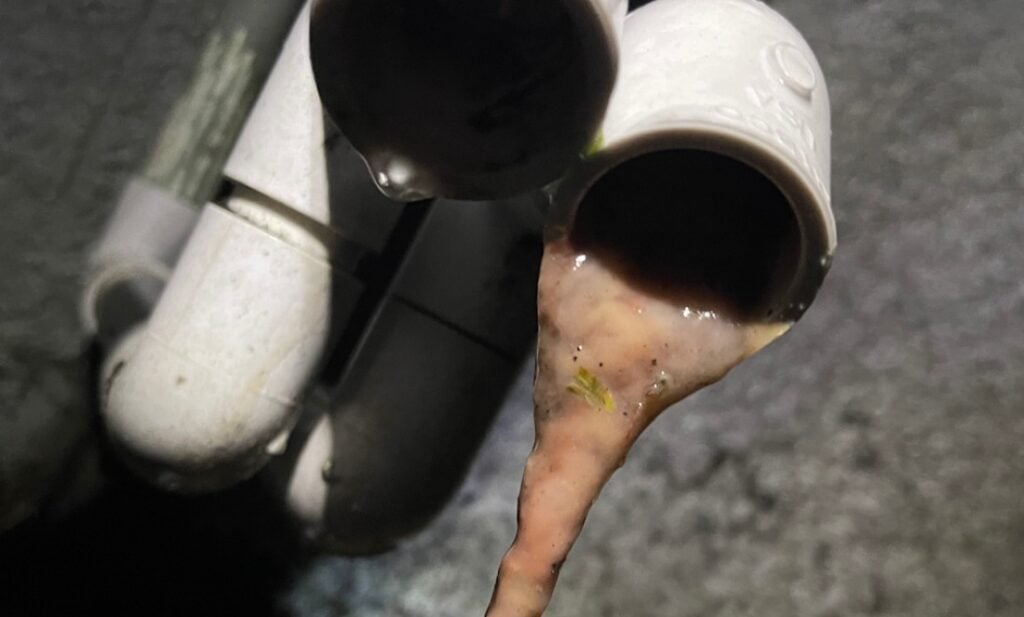Blog
Regular AC Maintenance Tips for Tampa Homeowners

Regular AC maintenance is essential to ensure the functioning of your AC system during the hot and humid Florida summer months.
This post will provide additional information on how to clear your drain line and also cover various types and locations of air conditioning filters.
Clearing Your AC Drain Line
The air conditioning system has a drain line that is responsible for removing the condensation that builds up during the cooling process. Over time, this drain line can become clogged, leading to issues with your AC unit. Here’s a step-by-step guide to clearing the drain line:
- Locate the drain line: The drain line is usually a PVC pipe near your air conditioner’s indoor unit. It may be attached to a drain pan or directly connected to the unit. In some cases, the drain line outlet can also be found on the outside of the home, typically near the condenser unit.
- Prepare the necessary tools: To clear the drain line, you’ll need a wet/dry vacuum cleaner (also known as a Shop Vac), a funnel or duct tape, and a mixture of equal parts water and vinegar. Shop vacs range in price, but we recommend purchasing a reputable brand with no less than 2.5 horsepower. Our technicians use the RIDGID 50313 Portable 4-Gallon Ergonomic model, which can be found on Amazon.
- Access the drain line: If the drain line is connected to a drain pan, you might need to remove the pan to access the line. If it’s connected directly to the unit, you can skip this step.
- Create a seal: Take the funnel or duct tape and create a seal around the opening of the drain line. This will ensure proper suction during the cleaning process. You can also accomplish a seal to create suction by using your hand cupped around the drain line and the vacuum; you may find this much easier.
- Use the vacuum cleaner: Connect the vacuum cleaner to the end of the funnel or directly to the drain line (if possible). Turn on the vacuum and let it run for a few minutes. The suction will help remove the clog from the drain line.
- Flush the drain line: After using the vacuum, remove the funnel or disconnect the vacuum from the drain line. Pour the water and vinegar mixture into the drain line using a funnel. This will help flush out any remaining debris or buildup.
- Test the drain line: Once you’ve flushed the drain line, carefully observe the flow of water. If the water drains freely without backing up, then the clog has been successfully cleared.
By following these steps, you should be able to clear a clogged AC drain line. However, if you encounter any difficulties or the clog persists, it’s recommended to seek assistance from a professional HVAC technician to avoid any potential damage to your system.
AC Filters
The AC filter captures dust, allergens, bacteria, pet dander, and odors. We recommend replacing the AC filter once a month, particularly if you have pets. Regularly changing the filter promotes cleaner air in the house and optimal airflow, maintaining the system’s energy efficiency and reducing your monthly energy bill.
AC Filter Types
There are different types of AC filters, including allergen, washable, and disposable filters.
Allergen Filters
If you suffer from allergies, you probably think using an allergen filter is a no-brainer. Still, our technicians recommend disposable MERV filters even to customers with the worst of allergies.
What is the most effective way to alleviate allergies at home?
FL-Air suggests installing an air purifying system focused on allergies, which cleans the air from the air handler and enhances your home’s indoor air quality while offering relief from allergies.
The use of allergen filters is not recommended, as they can limit airflow and reduce the efficiency of your AC system. To illustrate, imagine running around your home and then trying to breathe through two different straws – a regular drinking straw and a coffee stirrer. The coffee stirrer represents the allergen filter and is a crucial reason we suggest improving indoor air quality instead of investing in a more expensive filter that may ultimately hinder your system’s performance.
Washable Filters
We do not recommend using reusable filters due to their limited durability and increased maintenance requirements compared to disposable filters, including the need for proper cleaning and drying.
Washing, drying, and reusing a filter is not recommended if you want it to trap dust and other contaminants while promoting maximum airflow effectively. Remember, it’s all about the airflow!
MERV Rated Filters
We suggest using disposable MERV-rated filters for air filters. MERV stands for Maximum Efficiency Reporting Values and rates filter effectiveness. The MERV scale ranges from 1-16, and higher ratings capture more particles. We recommend buying a thinner MERV filter between 4-6. On Amazon, a 12-pack of disposable filters costs around $50 on average.
Filter Sizes
Filter sizing is not universal and depends on the size of your AC system and home. A filter’s size is measured by length, width, and depth. AC filters are commonly found in main hallways, under thermostats, and in master bedrooms. If you’re unsure of your filter’s location or size, contact us at 813-800-2665 to schedule AC maintenance. Our technicians can provide filter information to keep your system running smoothly.
This blog post is a transcription from a Facebook Live video hosted by our very own Emily. You can join us every Thursday @ 7 pm on our Facebook page. We remain committed as your HVAC solutions provider, with a focus on quality, integrity, and reliability.








